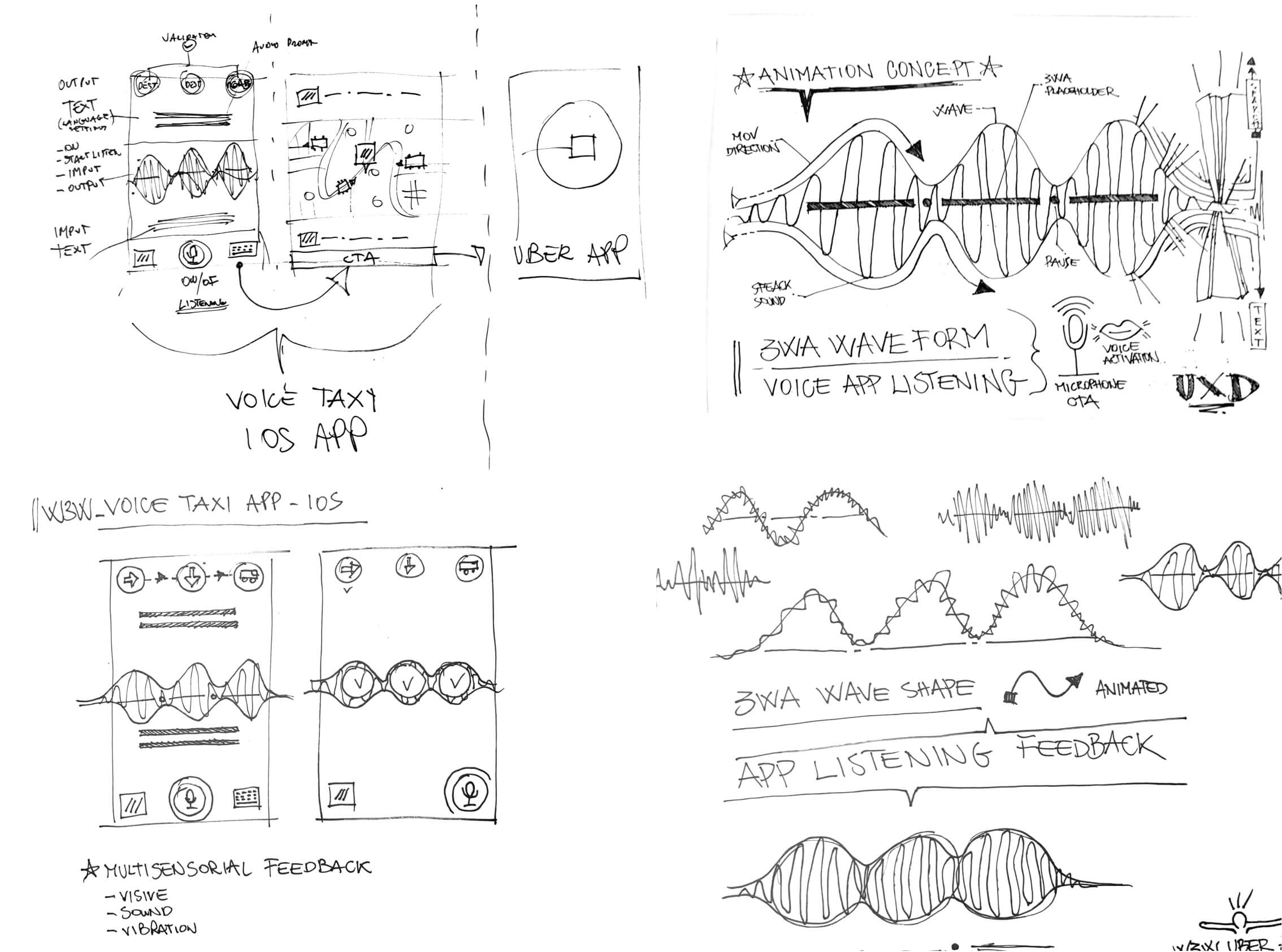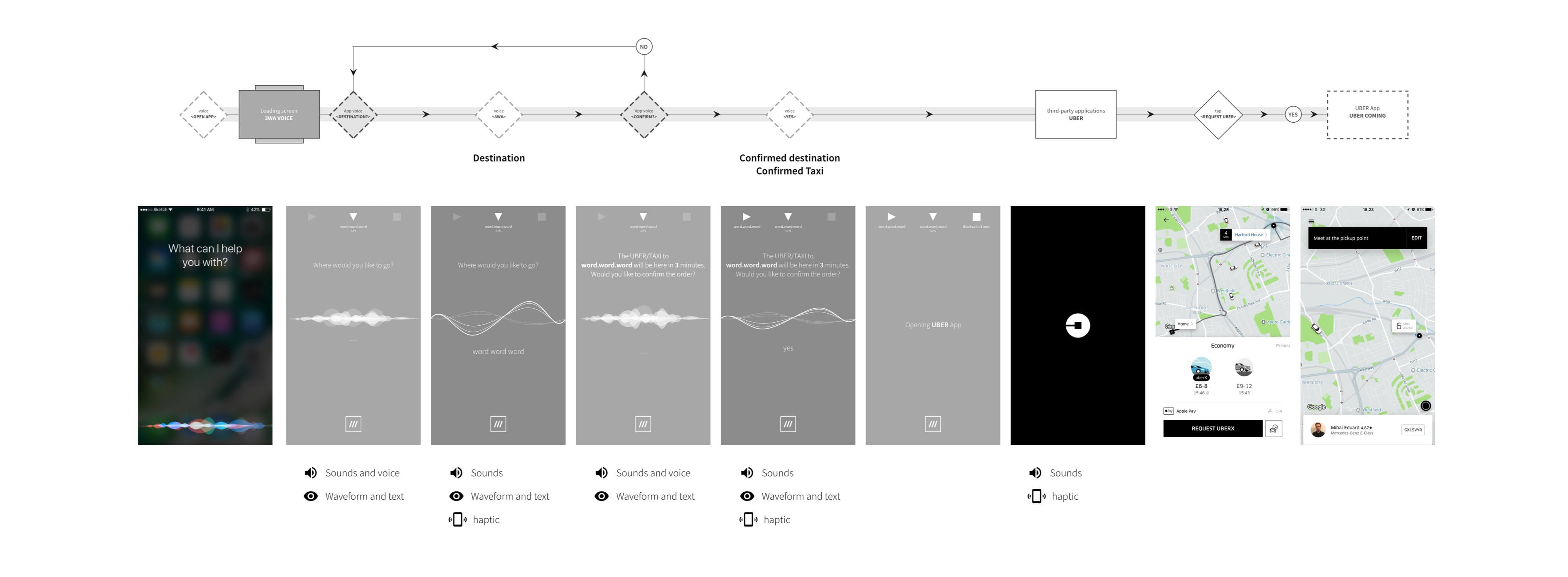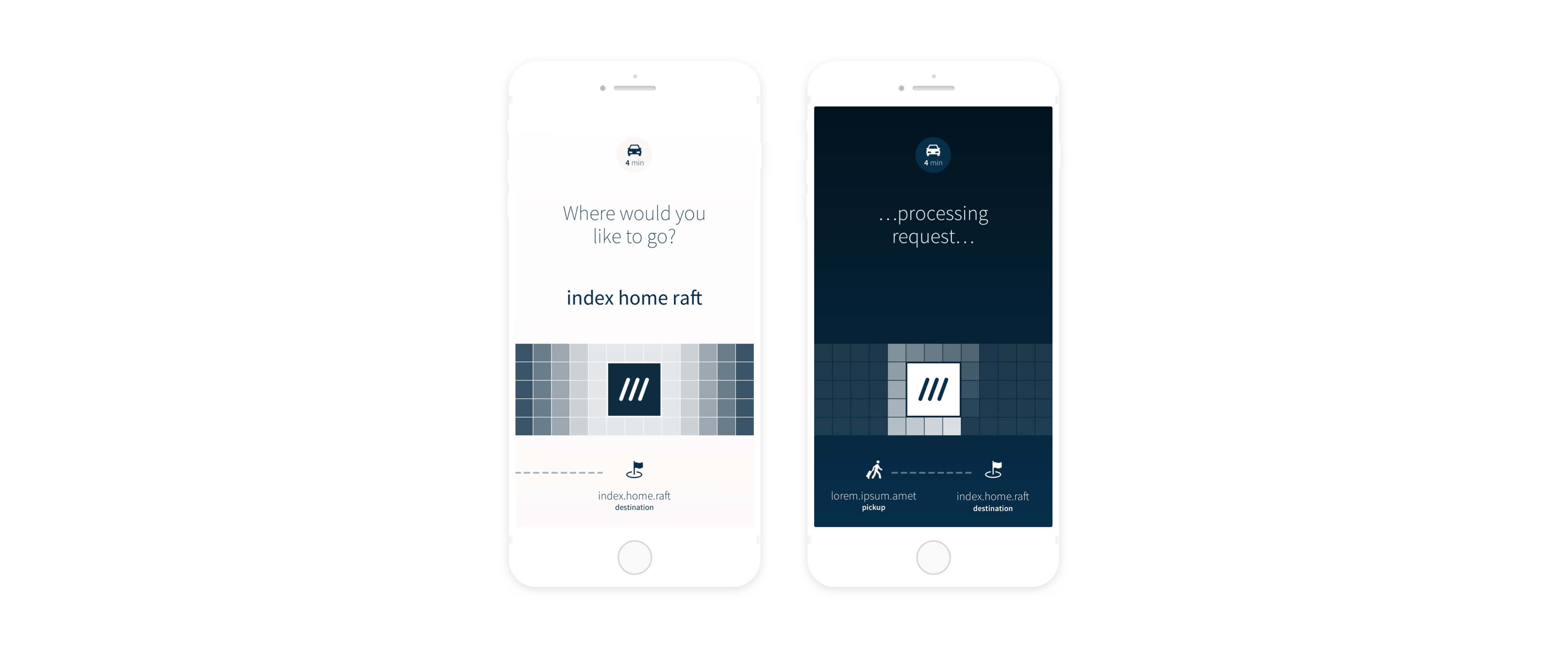3wordTaxi App
Navigate to a 3 word address by just speaking it.

Client
what3words Ltd
Addressing & geocoding System
Year
2018
London, UK
Case Study Overview
The main goal of this product was to test an innovative approach to calling a taxi using voice commands. This was a unique idea that had not yet been explored in the market, and the team behind the app wanted to see how users would respond to this new method of requesting transportation.
To make the app more appealing to potential investors and partners, the team also decided to integrate with popular ride-hailing services such as Uber and other providers via their APIs. This allowed users to not only request a ride using voice commands, but also to navigate to a specific location using a 3 word address, making it easier and more convenient for users to get where they needed to go.
The development process of this app involved a lot of research and testing to ensure that the voice recognition technology was accurate and reliable, and that the integration with third-party ride-hailing services was seamless. The team conducted extensive user testing to get feedback on the app's functionality and ease of use, making changes and improvements based on the feedback they received.
Upon release, the app received positive feedback from users who found the voice command feature to be a unique and convenient way to request a taxi. The integration with Uber and other providers was also well-received, as it allowed users to easily navigate to their destination and request a ride without having to type in an address or open a separate app.
Overall, this case study demonstrates how innovative ideas and technologies can be tested and refined to create a unique and valuable product. It also highlights the importance of user testing and feedback in the development process, as it can help to identify potential issues and areas for improvement.
Some information and details are excluded due to confidentiality reasons.
Managing the project
UX & Product Design work-flow

Problem & Opportunity
Addresses and voice just don’t work.
The use of addresses with voice input has been a persistent issue, and it is not difficult to see why. Traditional postal addresses were never designed with voice input in mind, and as a result, they often fall short when used in this way. The challenges associated with using addresses with voice input can be attributed to a variety of factors:
1. Mistakes are easy to make and hard to spot. When using voice input to provide an address, it can be challenging to differentiate between similar-sounding street names or numbers, leading to confusion and mistakes. This is especially true when using voice input to direct a car, where even minor mistakes can lead to significant delays or frustration.
2. Pronunciation can be difficult, especially for non-native speakers. Street addresses use a variety of non-dictionary words, many of which have unusual or unintuitive pronunciations. This can make it almost impossible for people who are not familiar with the language to provide an address accurately, leading to further complications.
3. Lack of uniqueness. House names and road names are not always unique, which can lead to further confusion. With multiple streets and roads having the same name, it can be difficult to ensure that packages and deliveries are sent to the correct location, especially when relying on voice input.
However, with every problem comes an opportunity. By recognizing the limitations of traditional addresses when used with voice input, there is an opportunity to innovate and develop new, more efficient solutions. One such solution is the use of 3 word addresses, which provide a simple and intuitive way to convey location information without the need for lengthy postal addresses. By using a combination of three common words, 3 word addresses are easy to remember and input using voice commands, making them ideal for use in a wide range of applications, from navigation to e-commerce. With the ability to uniquely identify any location in the world, 3 word addresses offer a practical and innovative solution to the challenges associated with traditional addresses when used with voice input.
Main challenge
The main challenge of this project is to test and prove the technology behind a voice-enabled taxi booking app. The technology needs to be robust and reliable to ensure that users can request a ride with ease using only their voice.
In addition to the technology aspect, the app also needs to provide users with a hands-off experience. This means that users should be able to request a ride and complete the booking process without having to manually input any information or interact with the app beyond using their voice.
To achieve this level of hands-off experience, the app will need to utilize conversational design techniques. This involves designing a user interface that feels like a conversation with a human agent, rather than a robotic interaction. The app will need to understand user intent and be able to respond appropriately in a way that feels natural and intuitive to the user.
One of the main challenges with voice-enabled taxi booking is the issue of addresses. Traditional street addresses were not designed with voice input in mind, making it difficult for voice systems to accurately recognize and differentiate between similar-sounding addresses. To overcome this challenge, the app will need to use a more precise addressing system, such as a 3 word address or a precise geolocation coordinate.
Another challenge is the issue of pronunciation. Street and location names can have non-dictionary words and unique pronunciations, making it difficult for non-native speakers or those unfamiliar with the area to communicate their desired destination accurately. The app will need to account for these pronunciation challenges and provide alternate methods of input or correction to ensure that the ride is booked to the correct destination.
Finally, the app will need to integrate with multiple taxi providers to provide users with a variety of options to choose from. This will require seamless integration with each provider's API and ensuring that the user experience is consistent across all providers.
My role
Lead UX & Product Designer
Solution
With what3words, the main challenge of providing drivers with a hands-off experience is addressed by offering an innovative addressing system that makes it easy for drivers to give their car a precise destination for navigation. The solution allows drivers to navigate to any precise 3m x 3m square in the world using 3 simple words. This is a significant improvement over traditional addressing systems, as the use of 3 simple words eliminates the risk of making mistakes or mispronouncing complex street names or house numbers.
Furthermore, what3words addresses are unique and do not rely on traditional addressing systems, which makes them a more reliable and accurate way for drivers to navigate to their destination. This is particularly important for foreign visitors to a country, who may not be familiar with the local addressing system and have difficulty pronouncing or understanding it.
The integration of what3words directly into a car's infotainment system via a simple piece of code is a testament to the solution's ease of use and convenience. This approach makes it easy for drivers to input their destination with minimal effort, further enhancing the hands-off experience that the solution offers.
Overall, what3words' focus on conversational design techniques, coupled with its innovative addressing system and integration capabilities, make it the ideal solution for drivers looking for a precise, reliable, and easy-to-use navigation system.
The Project
Approach
Product Audit
The rise of voice recognition technology presents a significant opportunity for products and services that can take advantage of it. The increasing popularity of voice-controlled home assistant devices like Amazon's Alexa and the rapid growth of smartphone voice queries indicate that voice technology is becoming more mainstream. With its hands-free and eyes-free nature, voice technology has the potential to make our daily lives more seamless and efficient, allowing us to focus on other tasks while communicating with our devices through natural language. As a result, products that incorporate voice technology are likely to be well-positioned to capture user interest and market share. However, it is also important to note that voice technology is still in its early stages and faces challenges related to accuracy and user trust. Products that can address these challenges while delivering a seamless and intuitive voice experience are likely to succeed in the market.
Research
To create a truly effortless and frictionless voice user interface (VUI), it is essential to understand how to apply the sense of everyday conversation. This involves looking beyond the surface-level meanings of words and delving into deeper, hidden nuances based on cultural expectations. Through thorough research, we can identify these nuances and use them to design elegant solutions that feel intuitive to users.
In order to achieve this, I have explored various types of voice wave design that can be associated with the main visual feedback in the user journey. Additionally, I have incorporated sounds and haptic feedback to improve usability and accessibility for all users. By combining these elements, we can create a seamless VUI experience that feels natural and intuitive for users to interact with.

UX Discovery
Voice waves visual feedback

UX Architecture
User flow and task model

Prototype
Testing the Conversational Design
User Experiece
Visual Conversation



Built for voice input
The app has been specifically built to cater to voice input, making it easier for users to search for a 3 word address by simply speaking it out. This feature greatly enhances the navigation experience, especially when driving, where street names can be ambiguous or traditional street address searches tend to drop pins in the center of buildings, rather than at the entrance. By enabling users to search for precise locations using just three simple words, the app streamlines the navigation process and saves users valuable time and effort. Additionally, this feature allows users to focus on driving without having to take their eyes off the road or hands off the wheel, ensuring a safer and more convenient experience.
Learnings, results and output
Through the development and launch of the Voice Taxi app, the team gained valuable insights and learnings about the potential of voice technology for IoT and transportation industries. The app's success and positive reception among potential investors and partners demonstrated the viability and demand for voice-enabled solutions.
One of the key outcomes was the integration of what3words into various leading products such as Mercedes, Land Rover, and TomTom. This integration allowed for a more precise and efficient navigation experience for drivers, particularly in areas where traditional street addresses may not be accurate or clear. This integration has helped to further establish what3words as a leader in the navigation and addressing space.
Another significant result was the app's compatibility with popular smart assistants like Amazon Alexa and Google Home. This integration provided users with a seamless and hands-free experience when ordering a ride, further demonstrating the potential of voice technology in transportation and IoT.
Overall, the Voice Taxi app provided valuable insights into the potential of voice technology and its compatibility with existing products and systems. It demonstrated the demand for voice-enabled solutions in transportation and IoT industries and helped to pave the way for future developments and integrations in this space.

Tags
#Travel #Tourism #Voice #Navigation #PostalServices, #Automotive & #Mobility #Events #emergency-services. #Geolocation #GoogleMaps #API #wha3words #Grid-System #UX #ProductDesign #Interactions #ValueProposition
Fair dealing Disclaimer
Sections 29 and 30 of the Copyright, Designs and Patents Act 1988
I've written this Case Study for purposes such as research and private study, criticism or review, or news reporting. I’ve used part of the copy from the author website (what3words.com) that you can see under the quotations «”…”»

